In my previous article I explained what’s up with grey water recycling: the do’s and don’ts when re-using grey water.
Now, let’s have a more detailed look at a few types of grey water recycling systems, such as how they work, what you may use them for and some cautions that you should take to ensure that it’s safe.
To begin with, if you want to re-use grey water on your homestead on a regular basis, you should contemplate the concept of treating it first.
Why treat it, you may ask? Well, there are a number of reasons for that.
First of all, if you want to use grey water for agricultural purposes such as irrigation, you must remove the potentially harmful substances first, especially if we’re talking about edible plants. What you spray on the plants gets into your digestive system later when you eat them; this is not a matter to be treated lightly.
Basically, you should remove any substances that can harm or affect human health. If we take the rationale further, you must cleanse the recycled water of any substances that may pose a threat to the environment or to people. Also, filtering re-used water will help a lot with preventing your grey water system from clogging.
Grey Water Treating Methods
Now, let’s take look at the most common methods for treating grey water systems, shall we?
1. Prevention
If you’re using the paradigm “prevention is better than treatment”, you will realize that the best method for treating and filtering grey water is to avoid the need to do so in the first place.
{adinserter backyardliberty}I know it sounds like a Zen riddle or something, but I am very serious about this matter. My point is, you can install a grey water system that doesn’t require treatment. If you remember in my previous article, I stated that not all grey waters are created equal.
If you’re using bio-degradable products in your bathroom and kitchen, you can re-use the respective grey water for irrigating your garden without filtering it. Lots of substances occurring in “organic” grey water are good for plant life; they’re actually nutrients that will help with plant growth. Some potential contaminants can be easily treated just by passing the respective water through a thin layer of soil, in the vicinity of your re-used water system.
This type of approach works mainly for grey water irrigation systems when the main concern is human contact with the water. If you manage to reduce it to a minimum or even eliminate it, you’ll mitigate the health risks associated with grey water systems.
2. Filtration
Moving along with the story, the next solution is the good ole filtration method.
The simplest method for treating your recycled water is to use a filter to prevent lint, hairs, food and what not from getting inside your grey water system.
There are lots of filters and filtering methods and a huge number of models of filters and types of materials used for filtering grey water.
One common(and cheap) method is to filter the grey water using natural materials, like a “natural” basin filled with stones and mulch (you remember my article about mulch, right?) which works as a “melting pot”, digesting and consuming the organic materials in the grey water and also filtering the solid residue. Mulch is obtained from tree bark, leaves and stuff like that.
If mulch is not your cup of tea, you can choose a slow sand filter that is made from layers of stone, gravel and pea gravel, all covered in sand.
The third method involves using a regular water filter, readily available in hardware stores or on Amazon, eBay and Craigslist. There are lots of types of water filters: some of them use cellulose-made cartridges (the cheaper ones) and other “high-end” varieties use ceramic or active charcoal filter cartridges. Generally speaking, these types of filters are meant to provide you with high quality, even potable water. If you’re using them for your grey water system, they can be a pain in terms of maintenance cost.
Sometimes the best way of dealing with the impurities in your grey water system is to use a settling tank, which translates into a treatment system using settlement and flotation.
The settling tank uses gravity for purifying grey water. The impurities that are more dense than water will eventually settle to the bottom of the tank while other substances that are lighter than water, such as oil, gas and other tiny particles will float to the surface of the tank, forming a scum layer.
3. Disinfection
The last method of treating grey water is by disinfection. You can disinfect grey water by using chlorine, ultraviolet rays or ozonation.
Using chlorine is the most popular disinfection method because it’s cheapest, is highly efficient and is relatively easy to perform. All you have to do is put chlorine tablets into your grey water tank and that’s about it.
You can treat grey water with ultraviolet light, but the rate of success depends greatly upon the water quality. Ultraviolet rays are easily blocked by the particulate matter in the water; thus this method doesn’t work very well if the light can’t pass through the water far enough.
Ozonation is seldom used in grey water systems but it works by generating ozone gas inside the water using a special device onsite. Ozone diffusion inside the water kills bacteria and pathogens but it’s kind of expensive.
Bottom line, if there’s no serious risk of human contact with the grey water, you don’t really need to disinfect it prior to using it in your garden for example. Bacteria and various other substances with the potential to harm human health are usually destroyed or removed if they pass through a short layer of unsaturated soil.
Keep in mind that if you’re using a grey water system, it’s not advisable to store the water rather to use it on the spot. Storing grey water maximizes the issues with microorganisms that thrive in it and it also has a foul odor.
The 24 hours storage period after treatment is the general rule of thumb when dealing with grey water. After 24 hours all bets are off so you should never use it past that expiration date. If you plan to store it for more than a day, the grey water must be disinfected or biologically treated.
DIY Systems for Re-using Grey Water
Let’s finish today’s article with a few ideas for home-made smart systems for re-using grey water.
1. Below you can see a DIY water recycler that uses a plastic-made trash bin (wheeled) with the grey water pouring inside on the top of the respective bin through a filter. When the bin fills up to 75%, there’s a water level switch that starts the water pump located on the bottom of the trash bin. The water pump empties the treated grey water from the bin until a low-water level switch is triggered and the filling process restarts. KISS in action!
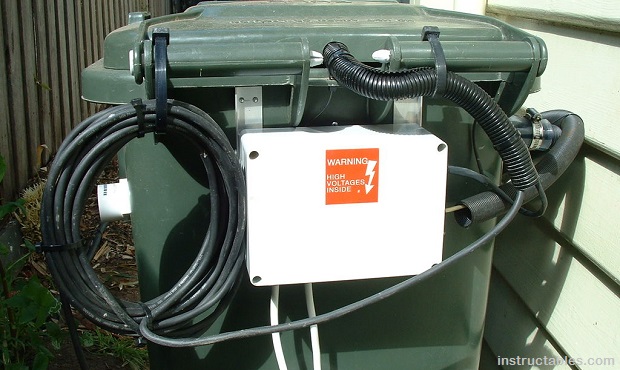
Source: Instructables
2. Here’s another DIY grey water treatment system that re-uses the water from flushing your toilet. Basically, the water that goes down the sink from your bathroom (the sink, toilet or shower) is captured using two soil pipes located on the side of the residence and pumped into a storage tank. Then it’s re-used for flushing the toilet.
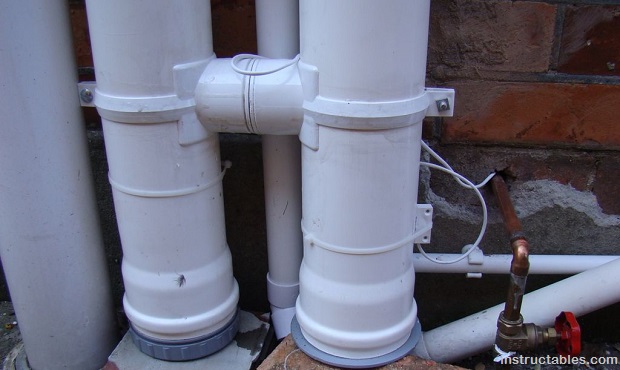
Source: Instructables
3. A very easy to understand schematic can be found below, where you can see clearly how a basic grey water treatment system works: the water captured from the bathroom passes through a filter (sand/metal etc.) and from there it is pumped via a hose to your garden, lawn or whatever.
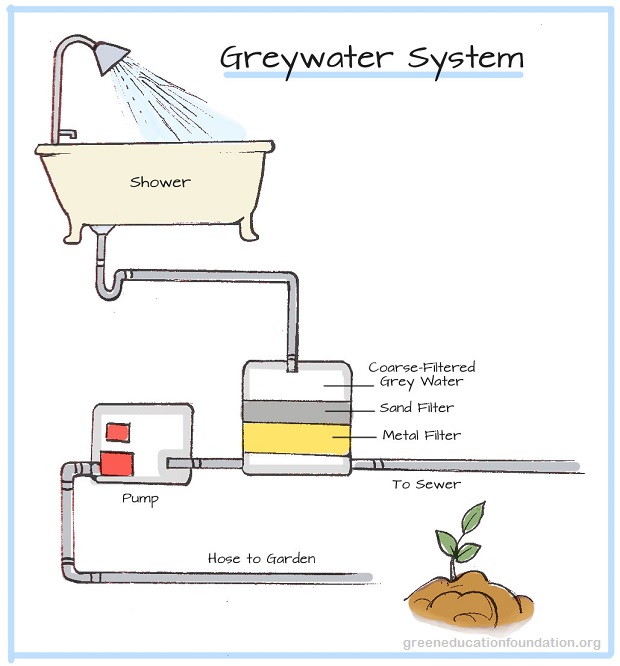
Source: Green Education Foundation
4. A very detailed grey water recycling system plan is available in the source link below. This system works very similarly to the ones commercially available, but you can DIY at a fraction of the price.
This smart system is composed of a filtration chamber, a storage/separation tank and the pump featuring various safeguards for preventing underflow/overflow situations, a venting system and a bypass scheme if you need to flush out the system rapidly for maintenance.
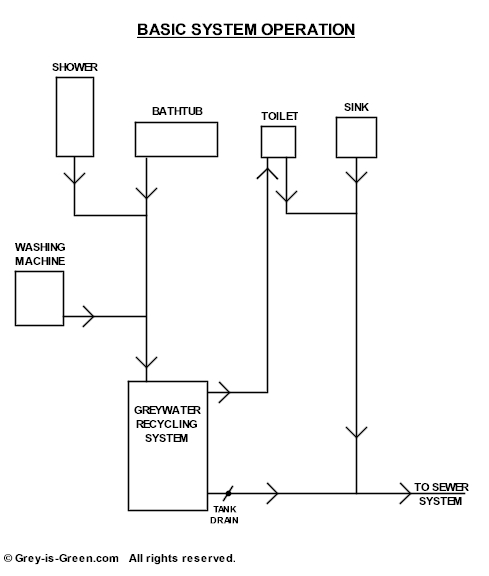
Source: Grey Is Green
This high tech water recycling system is connected to the bathtub, shower, your washing machine and the sewage; it captures the relatively clean grey water and filters it before storing it inside the storage/separation tank. Here flotation and settling takes place to further separate the impurities and there’s a chemical sterilization option, too.
As you can see, the latter is a combo of the aforementioned treatment systems: first, the grey water is filtered then put inside a settling tank for further purification. After that, it’s pumped out to be used for…whatever.
You can DIY this smart system for reusing grey water in a couple of weekends at most, using basic tools, low-level plumbing skills and off-the-shelf parts for a grand total of maybe $350 or less.
Do you use a grey-water collection system? If so, please tell us about it in the comments section below.
This article has been written by Chris Black for Survivopedia.





























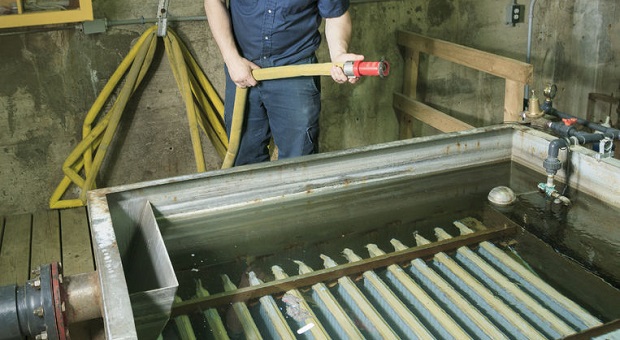
























































A couple of your instructions above, notably #2 and #4, include water from the toilet. That is NOT considered “grey” water but “black” water and must be carefully purified before any further use. While it makes sense to capture water from a shower to pour into the toilet bowl to flush (which I am doing now), the outflow from the toilet bowl is better left to be carried away by municipal sewage systems or a proper septic tank.
I have discharged water from my wash machine into the yard for years, and am now capturing much more of the “warm-up” or shower and hand-washing water to flush the toilet. When I scrub something outside, such as a dirty lawn chair or something else that’s accumulated general dirt and dust, I use a bucket and then turn that back to garden areas to reduce the amount I need to irrigate the yard (to the extent I haven’t also capped off sprinklers and reduced use of those remaining).
I have a dripping faucet that was only installed a couple of years ago. The fixture manufacturers are getting really greedy and now making faucets that must be totally replaced at substantial cost instead of being opened and fixed with a ten-cent washer. So I capture this water in a bowl and pour it into a bucket for later use. A big nuisance, but I’m trying to pack and move, so it’s not worth it to me to take other steps at this time. Just capturing this drip is VERY enlightening as to how much water is wasted by a slow drip.
I saw that issue with the toilet also. One of the things that water scarce area survivalists have got to learn is that water conservation must from now on be built in to its usage. I remember as kids in the city we used to turn on the kitchen faucet and let the cold water faucet run the pipe water cleared and the colder water came out before we’d drink one cupful. Must have wasted a half gallon for every swig we actually drank! Life certainly is changing.
As part of my ‘last big construction project’, i’m trying to build an ‘ultimate’ self sustaining off grid cabin. And wouldn’t you know it, even though i’m deep in the woods, my biggest problem is the local municipal county government with all their ‘excessive force’ building ‘Code’ corruption and greed. It’s a trickle down replication from the corruption and greed of big govenment.
I’m having a big problem with their ‘approval’ for things like incinerating toilets or composting toilets and other plumbing issues, and even square footage minimums! I don’t want a septic tank for the obvious long term maintenance downside, AND initial construction expense at my particularly remote site.
Nothing is, or will be perfect until we get rid of this old government paradigm and REALLY Clean house! Water is not and never will be a problem in my area, but i guess it could be worse where i’m hearing in some places the local laws actually won’t allow off grid homes because of the revenue they starve the greedy municipal parasites of! Everything’s a trade off, I guess.
Hope you’re moving to a ‘better place’, Susana? lol!
Oh, I forgot, Square foot construction ‘minimum’s which is not unlike greedy faucet makers and other similar products with built in lifespans, are so that they can keep the property tax level up there. Imagine if everybody, especially single people or childless couples lived in more efficient 500 square foot homes –which is less then a lot of big city apartments–how much parasitic patronage money they’d lose? They wouldn’t be able to pay the village president’s feckless pos nephew 20 dollars an hour full time for sweeping the town hall floor…once a day!
It didn’t say anything about using toilet water. It explained about a system that recycles the grey water to flush the toilet. Thus saving clean water consumption.
Actually, #2 above (under the subhead DIY Systems for Re-Using Grey Water) DOES advocate toilet outflow. Perhaps it was an omission of a few words by the author and needs to be edited. The first sentence says: “2. Here’s another DIY grey water treatment system that re-uses the water from flushing your toilet.” Now given how hard I am pounding on the keys and backing up here (I have NEVER had such a hard time typing a post), perhaps the author left out words such as “…re-uses the water from THE SINK OR SHOWER FOR flushing your toilet.” That may be what he intended, but it isn’t what it actually says. I may have been in error and misread #4 based on my horror at reading #2. This article needs to be edited!
Maybe I should have posted under the name “Grammar Nazi.” I happen to be an editor.
Interesting and informative…and yes, Susanna, I wondered about the toilet water as well. and [lol!] I, too, am a member of the “Grammar Police”, having edited and written copiously! LOL!
My mother used her grey water for her garden 60 yrs ago – we had a wringer washer – and my son diverted my sink grey water to the garden for me – works like a charm! Cheers to all here, and happy gardens!
If you replace “from” with “for”, it makes sense.
What about a small amount of colloidal silver to purify water in emergencies.
A friend of mine emailed me this article. I was very happy to receive it. I have been using my Grey Water to water the garden and trees for about 16 years now and there have been no problems. The garden (containers and raised bed) have been doing great. I recently purchased a composting toilet for inside the house and have built a large capacity one (30 gallon barrel) outside in a outhouse type building. The barrel has a handle attached so we can tumble it. I hope I will only have to dump it once a year. I do not us any of the toilet compost for the gardens or fruit trees. Anyway I was delighted to see your article.
Kedves Chuck!
A szürke vízzel kapcsolatban kérdezem: milyen a rendszered, amivel locsolsz? Küldenél egy pár fotót és leírást róla? Télen, illetve, amikor sokat esik az eső nincs problémád vele? A különféle szennyeződéseket mivel távolítod el a rendszerből, szűrő, filter, egyéb? Mi is felhasználjuk a szürke vizet, nem tervezetten, a föld alatt, hanem a szintkülönbségeket kihasználva a föld felett, viszont szeretném eltüntetni, hogy jobban lehessen a kertet alakítani. Minden ötletet előre is köszönök 🙂
Dear Chuck!
I ask you about gray water: what is your system with which you water? Send a few photos and descriptions about it? In winter, or when the rain falls, you have no problem with it? How do you remove the various impurities from the system, filter, filter, other? We also use gray water, not planned, under the ground, but by taking advantage of the differences in level above the ground, but I want to remove it to make the garden better. Thank you for all your ideas